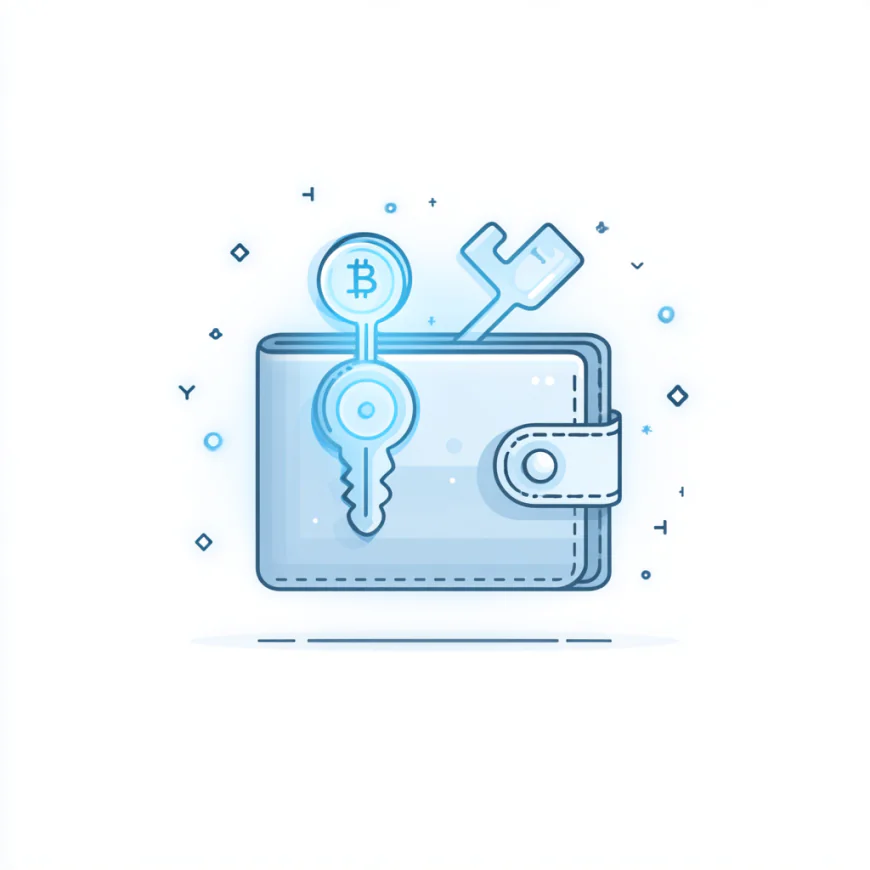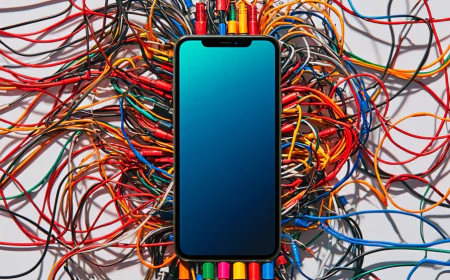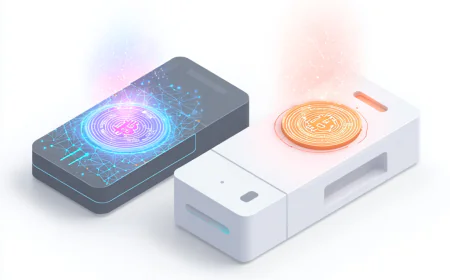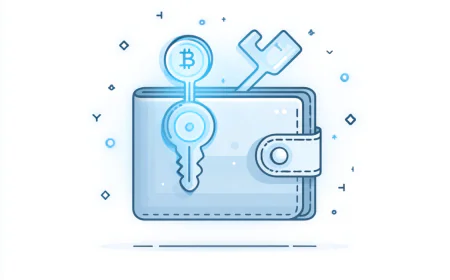What Is a Crypto Wallet? — Private Key vs Public Key Explained
Discover everything about crypto wallets in plain English: how they work, private vs public keys, seed phrases, wallet types (software, hardware, custodial, multisig, MPC, smart-contract), security tips, step-by-step guides, FAQs, and a full glossary. Perfect for beginners and advanced users who want to secure their digital assets safely in 2025.

What Is a Crypto Wallet? — Private Key vs Public Key Explained (Ultra-Clear, 2025 Edition)
Everything you need to know about wallets: keys, seed phrases, derivation paths, wallet types (software, hardware, multisig, MPC, smart-contract), security best practices, setup guides, incident response, FAQs, and a big glossary — in plain English.
1) Introduction: Why Wallets Matter
Cryptocurrencies do not live inside your phone or hardware device. They live on a blockchain — a shared public database. Your wallet stores keys, not coins. With the right key, the blockchain will accept that you
control certain funds. Without that key, the network won’t listen, no matter who you are. That’s why wallets are fundamental: they are how you prove control.
Analogy. Think of a blockchain like a global apartment building (the ledger). A public address is your apartment number — shareable so people can send you mail. A private key is the physical key to your door — never share it, or anyone can empty your place.
This guide takes you from first principles to advanced topics. We’ll demystify jargon (keys, seeds, derivation paths, multisig, MPC, account abstraction), compare wallet types, explain transactions clearly, and give you security playbooks and step-by-step setup guides you can follow today.
Not financial or legal advice. This is an educational guide. Always do your own research and follow local laws and regulations.
2) Blockchain & Key Basics
2.1 Public-Key Cryptography in One Minute
Most blockchains use asymmetric cryptography. You generate a random private key. A mathematical function derives a matching public key. Anyone can know your public key (or address derived from it), but no one can feasibly compute your private key from it. When you send funds, you sign the transaction with your private key. The network checks the signature against your public key to verify you authorized it.
| Concept | What it is | Simple analogy |
|---|---|---|
| Private key | A long random secret number | Your physical door key |
| Public key | Derived from the private key | Your door lock design |
| Address | Shorter, shareable form of the public key | Apartment number on the mailbox |
| Signature | Mathematical proof you authorized a transaction | Unique stamp that only your key can make |
Never share your private key or seed phrase. Customer support can’t recover stolen keys. There is no reset password
on a blockchain.
2.2 Which Algorithms?
- Bitcoin uses ECDSA over curve secp256k1; Taproot (Schnorr) adds flexibility and privacy.
- Ethereum uses ECDSA over secp256k1 for account keys; smart contracts verify signatures and enforce rules.
- Ed25519 (EdDSA) appears in other ecosystems; the idea is similar even if the math differs.
2.3 Keys vs Accounts vs UTXOs
- UTXO model (Bitcoin): Coins are chunks (Unspent Transaction Outputs). Spending consumes old chunks and creates new chunks (some to recipients, some back to you as change).
- Account model (Ethereum): Your address has a balance. Transactions add or subtract from that balance.
3) Seed Phrases & Derivation Paths
Modern wallets rarely ask you to write down a raw private key. Instead, they give you a seed phrase (12 or 24 words). This seed is like a super-key: from it, your wallet can derive many private keys and addresses. If you lose your phone but still have the seed, you can restore the wallet elsewhere.
BIP39 Seed Phrase. Paired with BIP32 (hierarchical keys) and BIP44 (derivation paths), one seed can create many accounts across many coins.
3.1 Why Not Screenshots?
Photos and cloud backups are frequently compromised. The safest backup is offline (paper or metal). Store duplicates in separate, secure places.
3.2 Optional Passphrase (a.k.a. 25th Word)
Add a passphrase on top of your seed to produce a different wallet. Powerful but risky — forget it and funds are unrecoverable.
3.3 Derivation Path Examples
# Common examples (do not paste real seeds!)
Bitcoin (BIP44, P2PKH): m/44'/0'/0'/0/0
Bitcoin (BIP84, native SegWit): m/84'/0'/0'/0/0
Ethereum (BIP44): m/44'/60'/0'/0/0
USDT (ERC-20 uses your Ethereum address): same as Ethereum path
Warning. Never test with real money first. Create a test wallet and send tiny amounts to learn.
4) Wallet Types (Mega-Guide)
There’s no single “best” wallet. The right choice depends on your goals, risk tolerance, and budget.
| Type | Best for | Pros | Cons |
|---|---|---|---|
| Software (hot) | Daily usage, small/medium balances | Free, convenient, fast | Online risk (malware, phishing) |
| Hardware (cold) | Long-term storage, higher balances | Keys offline; strong security | Costs money; extra steps |
| Paper | Legacy cold storage | Offline by default | Fragile; easy to misuse; not recommended now |
| Custodial | Newcomers, trading often | No key management; easy UX | Counterparty risk; not your keys |
| Multisig | Teams, treasuries, high security | Shared control; single key loss tolerable | More complex setup; coordination needed |
| MPC / TSS | Seedless, enterprise, mobile UX | Key shares; no single point of failure | Vendor dependency; recovery nuances |
| Smart-contract (AA) | Web3 apps; programmable features | Social recovery, session keys, paymasters | Contract risk; chain support varies |
4.1 Software Wallets
- Desktop: Full-featured, good for power users. Keep OS clean and updated.
- Mobile: Daily payments; use strong PIN/biometrics.
- Browser extensions: Great for dApps; beware phishing and fake sites.
Tip. Create a spending wallet for everyday amounts and a separate savings wallet for long-term funds.
4.2 Hardware Wallets
Private keys live in a secure chip and sign transactions inside the device. Confirm each transaction on the device screen.
- Buy from official sources; avoid second-hand devices.
- Initialize yourself; never use pre-filled seed cards.
- Back up seed phrase; test recovery.
4.3 Paper Wallets (Legacy)
Printed keys/QRs — fragile and error-prone; not recommended today.
4.4 Custodial Wallets
Keys held by a provider. Convenient for trading/fiat ramps, but introduces counterparty risk.
Rule of thumb: Exchanges are for exchanging, not long-term storage.
4.5 Multisig Wallets
Require multiple approvals (e.g., 2-of-3). Reduces single key risk. Common for treasuries and DAOs.
4.6 MPC / TSS
Replace a single private key with key shares. A signature is produced collaboratively without assembling the full key.
4.7 Smart-Contract Wallets & Account Abstraction
Smart contract accounts add features like social recovery, spending limits, and gas sponsorship.
5) Addresses, Formats & Naming
5.1 Bitcoin Address Types
- P2PKH (starts with 1): legacy, higher fees.
- P2SH (starts with 3): used for multisig/compatibility.
- Bech32 (bc1...): native SegWit, lower fees.
- Bech32m (bc1p...): Taproot addresses.
5.2 Ethereum Addresses
Hex string like 0xABCD… EIP-55 checksum capitalizes letters to catch typos.
5.3 Human-Readable Names
ENS maps names like yourname.eth to addresses. Verify before sending — names can expire or be misconfigured.
6) How Transactions Work
6.1 Bitcoin (UTXO) Flow
- Specify recipients and amounts.
- Wallet selects UTXOs and creates change back to you.
- Sign with your private keys.
- Broadcast → miners/validators include it in a block.
- Confirmations accumulate as blocks build on top.
Fee controls: RBF and CPFP help unstick transactions.
6.2 Ethereum (Account) Flow
- Transactions include a nonce, gas limit, and gas price.
- EIP-1559 adds a base fee (burned) and a priority tip.
- Token transfers call contracts; approvals grant spend permissions.
Risk: Unlimited token approvals are dangerous — review and revoke periodically.
7) Security Playbook
7.1 Big Rules
- Separate wallets for spending vs savings.
- Backups: Seed phrases offline (paper/metal) in multiple locations.
- Phishing defense: bookmarks; verify URLs; never sign blind.
- Device hygiene: OS updates; no pirated software.
- 2FA: use authenticator apps or hardware keys.
- Test restores on an offline device.
7.2 Extra Layers
- Passphrase (25th word) on hardware wallets.
- Multisig for treasuries and life savings.
- MPC/TSS for seedless UX.
- Whitelists & limits in smart-contract wallets.
7.3 What Not To Do
- Don’t store seeds in email/cloud/photos.
- Don’t install random .apk/extensions.
- Don’t brag about holdings.
8) Operational Guides
8.1 Beginner Setup (Software Wallet)
- Download from official source.
- Create wallet → write seed offline.
- Set strong password/PIN; enable biometrics.
- Test with tiny amounts.
- Whitelist frequent addresses.
8.2 Hardware + Software (Best of Both)
- Initialize hardware wallet yourself.
- Use it as a signer with your software wallet.
- Practice signing a small transaction.
- Move large funds after testing recovery.
8.3 Multisig Treasury (2-of-3)
- Create three independent keys on different devices.
- Set up a safe (Bitcoin or smart-contract on EVM).
- Distribute keys and document recovery plan.
- Require two approvals for spending.
8.4 Revoke Token Approvals
- Open a reputable approvals dashboard.
- Connect wallet read-only.
- Revoke unnecessary allowances.
9) Compliance, KYC/AML & Record-Keeping
Rules differ by country and evolve. Keep records of deposits, withdrawals, trades, and spending. Export CSVs where possible and track cost basis.
10) Privacy, Tracing & Good Hygiene
- Use fresh addresses when possible.
- Mind metadata (IP, browser fingerprints).
- Know legal/ethical constraints before using privacy tools.
11) Incident Response & Recovery
Suspect compromise? Act fast: disconnect, move funds, rotate keys, audit approvals.
- Switch to a clean device.
- Create a fresh wallet (new seed/passphrase).
- Revoke token approvals from the old address.
- Move remaining funds to the fresh wallet.
- Investigate root cause.
- Update ops: bookmarks, hardware keys, backups.
12) Myths & Common Mistakes
| Myth/Mistake | Reality |
|---|---|
| “Wallets store coins.” | Wallets store keys; coins live on the blockchain. |
| “Seed in cloud is fine.” | Clouds get breached — keep backups offline. |
| “One wallet fits all.” | Use the right tool (spending vs savings). |
| “Support can recover my key.” | No centralized reset for self-custody. |
| “Unlimited approvals are harmless.” | They’re a common drain vector; review/revoke. |
13) FAQ (Quick Answers)
Is a hardware wallet necessary?
For significant long-term funds — yes.
Can I recover without my seed?
No for traditional wallets. MPC/AA wallets may use guardians/shares.
What if I forget the passphrase?
Funds are unrecoverable — back it up securely.
Can I share my address publicly?
Yes. That’s what public addresses are for.
Are mobile wallets safe?
For small/medium balances, yes. For life savings, use hardware/multisig.
14) Big Glossary (Selected)
- Account Abstraction (AA)
- Smart contracts as accounts; programmable security and gas sponsorship.
- Address
- Shareable identifier derived from a public key.
- Allowance
- Permission for a contract to spend your tokens.
- BIP39
- Mnemonic seed phrase standard.
- BIP44
- Key derivation path convention.
- Cold Storage
- Keeping keys offline.
- Derivation Path
- Deterministically derives many keys from one seed.
- ENS
- Name service mapping names to addresses.
- Gas
- Unit of work on Ethereum-like chains.
- MPC/TSS
- Signatures from key shares without reconstructing a single key.
- Multisig
- Multiple signatures required to spend funds.
- Nonce
- Per-account transaction counter preventing replay.
- Private Key
- Secret number used to sign transactions.
- Public Key
- Derives from the private key; verifies signatures.
- Seed Phrase
- Human-readable backup of the master seed.
- UTXO
- Unspent Transaction Output; Bitcoin’s coin model.
15) Tools & Resources
- Official wallet docs (hardware/software you choose)
- Blockchain explorers (Bitcoin, Ethereum)
- Security best practices guides
- Approvals (revoke) dashboards
- Portfolio trackers (CSV import)
- Password managers & 2FA authenticators
16) Conclusion & Next Steps
Wallets are about control. Understand keys and seeds, choose the right wallet type for each job, and practice strong security. Start with a spending wallet, graduate to hardware or multisig for savings, and build habits: backups, updates, phishing awareness, and periodic audits. That’s how you keep your crypto yours.
Action plan:
- Create a test wallet; move tiny amounts to learn.
- Initialize a hardware wallet; back up seed on paper/metal.
- Use hardware as a signer with your software wallet.
- Set reminders to review approvals and backups.
What's Your Reaction?
 Like
0
Like
0
 Dislike
0
Dislike
0
 Love
0
Love
0
 Funny
0
Funny
0
 Angry
0
Angry
0
 Sad
0
Sad
0
 Wow
0
Wow
0







































